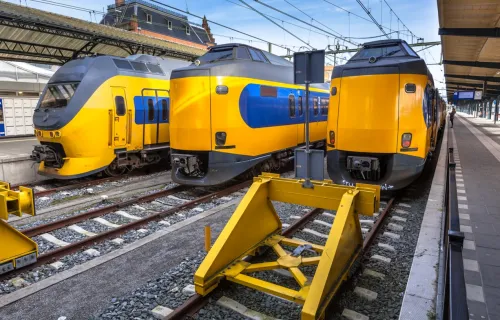In today’s highly competitive and fast changing travel industry, driving efficiencies and cost-effectiveness are critical to long-term survival. Retail is a prime area for achieving both objectives, and travel operators are seeking to invest in retail systems that streamline and improve processes while offering a shorter payback period and generating more revenue. Today’s retail technology is less expensive than before and offers new possibilities for developing user-friendly and flexible tools for managing mobile sales.
The back office is the backbone of onboard sales
Regardless of the type of retail (airline, rail, ferry), all onboard sales rely on a well-functioning back office that provides accurate information to point-of-sale terminals. The back office is the link between onboard operations and ground-based ERP systems. It helps improve basic functions like stock movement, packaging, warehousing, sales and reconciliation. It also helps operators identify potential weaknesses in their daily replenishment, as well as sales and money handling procedures. No matter what a travel operator’s onboard retail requirements are, a solution that provides the flexibility and functionality to manage onboard retail processes in a multi-company, back-office environment is vital.
Advantages of a single, back-office solution for onboard sales
Many back-office retail solutions fall short of managing all of the required functions. The ideal solution offers a suite of components that provide end-to-end coverage, including customer relationship management, reporting, web-shop, warehousing, etc. A single solution also offers the advantage of a single vendor, which makes project management and delivery more efficient and cost-effective.
This type of single solution should deliver not only the technical capabilities required to manage onboard sales but also support a revenue-generating retail business model. For example, it should support the completion of in-flight sales via a web-shop portal that generates preorders before flights. This simplifies the wholesales process, as the stock going onboard has already been sold. Normally, all sellable stock is shipped onboard, and much of it will be returned unsold, which from a logistics point of view is inefficient.
With a web-shop portal, passengers can choose from a wider selection of products and also have more time to make their buying decisions. In addition, online shopping is something to which they’re already accustomed. Passengers can use their tablets or smart phones to order products during the flight, read destination information, enroll in airline loyalty programs, etc.
With this type of retail model, travel operators also benefit from more customer information to support customer profiling. Customer purchasing behavior and other personal data are kept in a CRM system connected to the back office. This way all crew can utilize the same passenger information, no matter where the data has been collected.
Systems integration and cloud computing capabilities
The ideal back-office solution described above should be offered either as a stand-alone system supported with a point-of-sale solution, such as SkyPOS from Novo, IVC, or as an integrated system equipped with interfaces to the travel operator’s ERP systems.
Many travel operators have also realized the benefit of cloud computing. With cloud computing, they achieve significant cost savings through on-demand services, Internet accessibility, outsourced hardware capacity etc. Interfaces to other systems can also be easily implemented using web services and XML interfaces.
CGI’s Pro Logistica solution has been a trusted back-office solution for in-flight retail sales since 2002. In the last few years, rail companies have asked us to adapt it for their onboard sales, which we’ve done successfully. If you’re looking for a single onboard retail solution that supports back-office operations or for more information on the latest innovations in onboard sales, contact us for a discussion.





